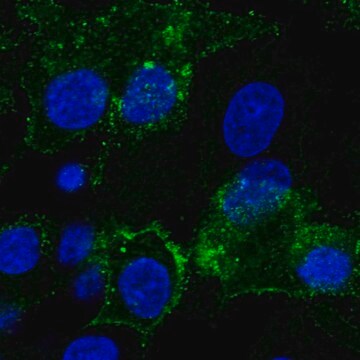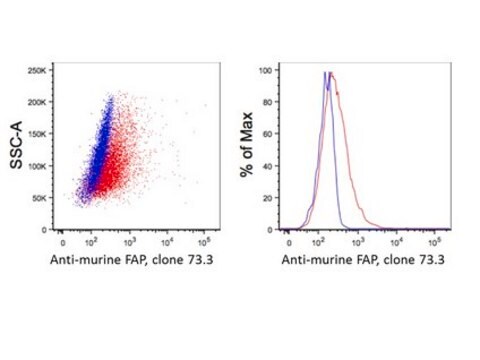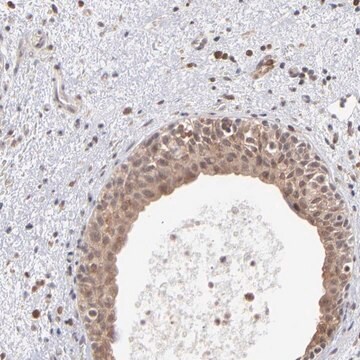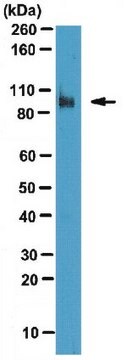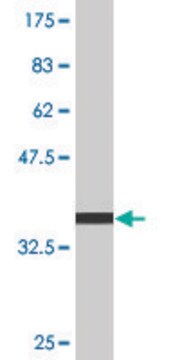Key Documents
S1701
Anti-SDCBP antibody produced in rabbit
~1.0 mg/mL, affinity isolated antibody, buffered aqueous solution
Synonim(y):
Anti-MDA-9, Anti-Melanoma differentiation associated protein-9, Anti-Pro-TGF-alpha cytoplasmic domain-interacting protein 18, Anti-Scaffold protein Pbp1, Anti-ST1, Anti-SYCL, Anti-Syndecan binding protein (syntenin), Anti-Syntenin, Anti-TACIP18
About This Item
Polecane produkty
pochodzenie biologiczne
rabbit
białko sprzężone
unconjugated
forma przeciwciała
affinity isolated antibody
rodzaj przeciwciała
primary antibodies
Postać
buffered aqueous solution
masa cząsteczkowa
antigen ~30 kDa
reaktywność gatunkowa
mouse, human, rat
stężenie
~1.0 mg/mL
metody
immunoprecipitation (IP): 10-20 μg using lysates of human HeLa cells
indirect immunofluorescence: 2-5 μg/mL using human HeLa cells
western blot: 2-4 μg/mL using whole extract of human HEK-293T cells, rat NRK cells, or mouse Neuro-2a cells
numer dostępu UniProt
Warunki transportu
dry ice
temp. przechowywania
−20°C
docelowa modyfikacja potranslacyjna
unmodified
informacje o genach
human ... SDCBP(6386)
Powiązane kategorie
Opis ogólny
Zastosowanie
- enzyme linked immuno sorbent assay (ELISA)
- immunoblotting
- immunocytochemistry
Działania biochem./fizjol.
Postać fizyczna
Oświadczenie o zrzeczeniu się odpowiedzialności
Nie możesz znaleźć właściwego produktu?
Wypróbuj nasz Narzędzie selektora produktów.
Kod klasy składowania
10 - Combustible liquids
Klasa zagrożenia wodnego (WGK)
nwg
Temperatura zapłonu (°F)
Not applicable
Temperatura zapłonu (°C)
Not applicable
Certyfikaty analizy (CoA)
Poszukaj Certyfikaty analizy (CoA), wpisując numer partii/serii produktów. Numery serii i partii można znaleźć na etykiecie produktu po słowach „seria” lub „partia”.
Masz już ten produkt?
Dokumenty związane z niedawno zakupionymi produktami zostały zamieszczone w Bibliotece dokumentów.
Nasz zespół naukowców ma doświadczenie we wszystkich obszarach badań, w tym w naukach przyrodniczych, materiałoznawstwie, syntezie chemicznej, chromatografii, analityce i wielu innych dziedzinach.
Skontaktuj się z zespołem ds. pomocy technicznej

